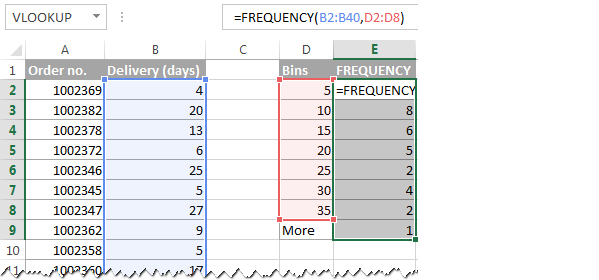

Also, histogram charts are based on area. So there is no gap in the data in a histogram chart. The difference between a histogram chart and a bar chart is, a histogram relates only one variable, but a bar chart is pertinent to two. Picture 1- The air pollution level in City A Histogram demonstrates the optical deputation of data dispensation, to figure out the usage of a histogram, we’ll bring up a plain example.Īssume some information is collected about the air pollution level in City A for 20 days. The data must be measured on an extendable criterion, for example, volume, time, temperature, etc. Meanwhile, they’re defined as the non-overlapping distance of the variables. Bins are generally determined as successive, and they must be adjoining too. Learn more about the concept of histogram:( ) Excel Histogram Bin Rangeĭisarticulating the data into intervals (which is called BINs), and the number of incidences (which is called frequency), creates a histogram. Karl Pearson presented a histogram for use in Statistical Analysis. Then click Colors and select a palette that has bright, contrasting colors (to illustrate the increased, decreased, and intermediate values most effectively).A Histogram Chart is a precise plot to indicate the frequency dispensation of numerical data. Scroll across the Design options and select one with lots of obvious movement.

The chart appears with the Chart Tools/Design Ribbon menus. Access your spreadsheet and select the applicable database.
How to create a histogram in excel 2016 series#
A classic waterfall chart illustrates how an initial value is increased and decreased by a series of intermediate values, leading to a final value.ġ. Waterfalls are also called Bridge, Flying Bricks, and Mario charts, because the intermediate-value columns appear to be floating in midair. Use Waterfall to show how initial values are affected by a sequence of positive and/or negative numbers. When finished, close the Format Data Series pane. Browse through the remaining options on the Series Options drop-down menu, including chart and plot areas, and axis settings. Next, select Chart Title from the Series Options dropdown menu, enter a new title, then adjust the alignment based on your preferences.Īgain, notice how the chart has changed. Then select Number and choose the number format you prefer from the list.Ħ. Under Axis Options > Bins, select By Category. For Tick Marks, choose whether you’d like to see them inside or outside the chart, or Cross (both inside and outside), or other options. Select Horizontal Category Axis from the list.ĥ. Click the down arrow beside Series Options and browse through the drop-down menu to ascertain how each of these options perform. Move the slider to change the gap width-that is, the space between each column on the chart.Ĥ. In the Format Data Series pane, click Series Options (the chart icon). Right-click any of the rectangles on the chart and select Format Data Series. Browse through the options and choose your favorite.ģ. The style changes are subtle, such as location of the legend or font attributes. Then click the paintbrush to change the chart’s style, design, and colors. Click the + sign to edit the chart elements: Axes, Axes Titles, Chart Title, Data Labels, Gridlines, and Legend.


 0 kommentar(er)
0 kommentar(er)
